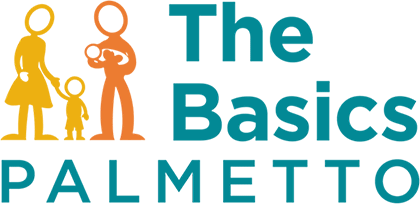Young children thrive when their world seems loving, safe, and predictable. Little ones love knowing what to expect!
Predictability helps them feel secure.
It’s why young kids love the same books, movies, and activities over and over again! It’s also why they need consistent boundaries and guidelines. You don’t have to be an organized, “Type A” personality to create simple routines for your family. It may help to think of them as “rhythms” instead of routines.
Here are some things to keep in mind when creating a new routine:
– Routines should be realistic for you and for your family. What works for someone else may not work for you.
– Start small and simple. Establish consistency in one area before you add something new.
Not sure where to start? We recommend an early and consistent bedtime routine if you don’t have one already!
A bedtime routine helps to condition a child’s brain that it’s time to fall asleep. Your young child may be more “wired” or hyperactive when it’s time for bed or past time for bed. This is often because they are overtired. Providing a consistent, comforting, predictable routine may help your child go to sleep and even get more sleep. This makes for a happier, healthier child (and a less stressed parent.)
Here are 4 simple tips for creating a bedtime routine:
1. Say “goodnight” to screens as early as possible in the evening.
Screens interfere with the brain’s ability to settle down and fall asleep.
2. Do your bedtime routine in the same order each night.
Over time, having an order to your routine (bath, pajamas, brushing teeth, a bedtime story) signals your child’s brain and body that it’s time to go to sleep.

3. Create a calming environment.
This is helpful whether your child is a baby or a five-year-old. Turning off screens, quieting the house, and focusing your attention on bedtime (instead of your phone or other distractions) helps your child to relax and prepare for rest.
4. Make sure part of the routine feels like a reward for your child.
Snuggles, rocking, a bedtime song, a favorite book to read aloud – these are some of the best gifts you can give your child at the end of the day. They will begin to look forward to this special time with you! And you may be surprised at how grateful you are for the snuggles at the end of the day. Bonding with your child at bedtime is a great way to do Basic #1: Maximize Love and Manage Stress.
///
Routines take time to get traction, so don’t become discouraged if there’s resistance at first. This is normal. Think about what happens when you try to start a new exercise routine or eating regimen. You resist, you avoid, you procrastinate! The same can be true when you begin a routine with your child. Gradually, however, you and your child will establish and new normal.
Simple routines – for eating, playing, sleeping, etc. – are one of the ways you give your child a great start in life because they help your child feel loved and secure. Over time, they can also help you manage stress if it means you’re fighting fewer battles with your little one.

The Basics are 5 fun, simple and powerful ways that every parent can give every child a great start in life!
Here are some resources that can help you on your journey:
- Watch this short video for encouraging ways that real parents are “Maximizing Love & Managing Stress” in everyday life. Click on the tips at the bottom of the page for Infants 0-12 months and Toddlers 12-24 months.
- Receive regular, FREE resources from The Palmetto Basics.
- Follow The Palmetto Basics on Facebook and Twitter. We provide encouraging, real-life, shareable content to help parents and caregivers!
- If you, your faith community, your organization, or your place of business would like to join us as a Champion for Children, contact us! palmettobasics@gmail.com.
Thanks for sharing this post and spreading the word about The Palmetto Basics to those within your circle of influence!

